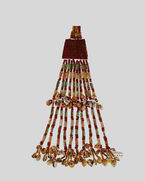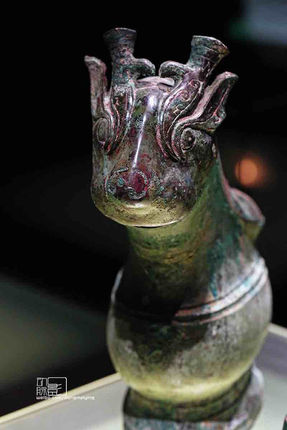Zhou Dynasty — Longest Dynasty of Ancient China with Great Philosophical Schools
The Zhou Dynasty (1046 BC — 256 BC) was the third and longest dynasty in ancient China.
It marked the period when many important Philosophical Schools, including Confucianism, Taoism, Mohism, Legalism, Military Strategy, Yin Yang, and Five Elements, emerged and flourished.
The Zhou Dynasty was divided into two periods: the Western Zhou (1046 BC — 771 BC) and the Eastern Zhou (770 BC — 256 BC).
-
The Western Zhou marked a relatively peaceful era in which hundreds of vassal states both held great respect for and paid tribute to the kings of Zhou. This period was highly admired by Confucius.
-
In the Eastern Zhou, the kings of Zhou lost control, and many lords began to fight and compete against each other.
Consequently, this era was also known as the Spring and Autumn Period (770 BC — 403 BC) and the Warring States Period (403 BC — 221 BC).
Throughout the 790-year ruling period of the Zhou, 37 kings held sway over the empire.

Unearthed Bronze Ritual Water Container (Qiang Pan) with 284 Characters Carved Inside, Recorded History of First Seven Kings of Zhou — Baoji Museum
Zhou Dynasty Facts
-
The end of the Western Zhou was caused by King Ji Gongsheng and his beautiful icy queen Bao Si.
-
The ideas of the Divine Right of Kings and Mandate of Heaven were proposed and accepted in the Zhou Empire.
-
The appearances and popularity of all important ancient Chinese Philosophical Schools made Zhou the starting point of Atheism in Chinese culture.

Unearthed Bronze Watering Utensils (Yi) of the Western Zhou — Baoji Bronzeware Museum (Photo by Dongmaiying)
-
Zhou’s people honored their departed ancestors more than celestial beings and ghosts.
-
The first code in the history of China was published in the Zhou Dynasty, which stipulated explicit rights and duties and strict etiquette of different hierarchies.
-
The people of Zhou recorded their important events and achievements on the bronze wares.

Bronze Bell of Western Zhou with Inscriptions Carved on — Shanghai Museum (Photo by Dongmaiying)
Brief History of the Rise and Fall of the Zhou Dynasty
Mysterious Ancestor of the Zhou Clan
The earliest ancestor of the Zhou was named Ji Qi, whose mother got pregnant after accidentally walking on a giant footprint.
The way she got pregnant and Ji Qi's appearance were all too special, making her think this baby boy was a little monster and throw him away.
However, nearly all of the animals were trying their best to protect and feed this baby boy; he never got hurt in the wild nature and grew into a decent young man.
Though his given name Qi means to abandon, which kept reminding him of his sad, unique experience, he was quite a diligent and intelligent person who started to plant wheat and millet.
Then he served as the Minister of Agriculture for Kings Yao and Shun. Gradually, more people came to him, and soon they formed a big clan named Zhou.
Soon, they pledged their loyalty to and became a vassal state of the Shang Dynasty.

Bronze Bells on Horse Collar of Early Western Zhou — National Museum of China
Vengeance and Establishment of the Zhou Empire
Generations later, a lord of Zhou was wrongly sentenced to death by a king of the Shang Dynasty.
Afterward, Zhou's people started to plan for vengeance while extending their territory.
Later, in the Battle of Muye, Lord Ji Chang and Ji Fa of Zhou defeated the last king of the Shang Dynasty and established a new empire under the assistance of a mysterious minister Jiang Ziya, the founder of Military Strategy.


Unearthed Ritual Bronze Vessel (Li Gui) with Inscriptions Carved inside Recorded the Battle of Muye that Perished Shang Dynasty, and the Establishment of the Zhou Dynasty — National Museum of China
Flourishing and Expanding of the Zhou Dynasty
In the next half a century, the Zhou Empire defeated rebellions and kept developing.
Later, King Ji Xia started to expand the realm further. He led his army and marched eastward and southward several times but mysteriously perished in a river.
Afterward, his son, King Ji Man, was enthroned.
As Zhou's most legendary, ambitious king of Zhou, Ji Man further extended the territory.
In some legends, he met the Goddess of Mount Kunlun, Xiwangmu, when marching to the west.
King Ji Man's military achievements also cost lots of money.
Unearthed Exquisite Jade and Gold Accessories of Zhou (Photo by Dongmaiying)
Retreat, Reform, and Fall of the Empire
Therefore, when his son Ji Yihu became the next king, he legalized Land Privatization and made more money for the kingdom.
As a peace worshiper, King Ji Yihu did perish a vassal state because of some beautiful women.
Around half a century later, King Ji Hu implemented a controversial reform that jeopardized many people’s benefits. Soon, a big riot against the king happened; Ji Hu escaped to a mountain and starved there.
Decades later, King Ji Gongsheng tried to amuse his beautiful queen, the Lady of Ice, several times by sending false alarms to fool and make fun of his armies.
Then, in 771 BC, when a real invasion outburst, no army showed up to protect the king; he was soon caught and assassinated because of his ridiculous behavior.
Later, his son claimed king and re-established their empire, the Eastern Zhou.

Set of Weapons of Western Zhou — Shanxi Museum (Photo by Dongmaiying)
Shrinkage of Eastern Zhou and Loss of Power and Land
The first half of the Eastern Zhou period was also named the Spring and Autumn (770 BC — 403 BC) when many vassal states kept fighting against each other to occupy more land and people.
Powerful lords still respected the kings of Zhou as honorable monarchs, as well as political pawns.
Overlords of big states, such as Lv Xiaobai and Ji Chonger, still cared about decent reputations, public opinions, hierarchies, and basic rules set at the beginning of Zhou.
No matter how powerful they became, they never attacked the kings of Zhou.

Exquisite Jade Decoration (Yu Yuan) of Eastern Zhou — Nelson-Atkins Museum of Art (Photo by Dongmaiying)
Thriving of the Seven Kingdoms and the End of the Zhou Dynasty
Decades later, here came the Warring States Period (403 BC — 221 BC), when all the lords claimed themselves kings and their realm kingdoms, and all the kings aimed to conquer other kingdoms and unify the whole of the nation.
Many of the former decency and etiquettes in ancient Chinese culture were all expelled because of the conspiracies and wars.
When those former vassal states were expanding into independent, powerful kingdoms, the Zhou government, on the contrary, was shrinking.
In the late period, the Zhou rulers were only in charge of the capital city with around 30,000 civilians, while huge kingdoms like Qin had over a million soldiers.
The last king of Zhou passed away in his palace, old and sick, leaving no heir.
One year later, the King of Qin occupied Zhou’s capital city and ended the empire.

Jade Pieces (Yu Fu Mian) of Zhou, Used to Sew on Fabric to Cover Face of the Deceased — Shanghai Museum (Photo by Dongmaiying)
Political Structure and Social Systems of the Zhou Empire
Population
The population of the Zhou Dynasty was approximately 5 million initially, and it reached its peak at around 25 million.
Political System
The System of Enfeoffment served as the political structure of the Zhou Empire, encompassing the following main aspects:
-
The king held the esteemed position of the monarch, with lords and their vassal states paying tribute and adhering to the king.
-
Hereditary and stable, the ruling class and noble status wielded authority over all matters within their vassal states.
-
Strict rituals were established and widely applied based on social status.
Official Selection System
The Zhou Dynasty operated on an aristocratic hereditary system, where political power and leadership were passed down within privileged and noble families.

Bronze Ding, the Representative of Paramount Power, of Zhou — Shanghai Museum (Photo by Dongmaiying)
Tax
During the Zhou Dynasty, citizens were required to contribute to cultivating specific public farmlands, which served as a form of taxation and were owned by the royal or noble families.
Military Service
-
Every individual in the kingdom bore the obligation to enlist in the army, actively participating in the defense of their land and ensuring the safety of their own families.
-
Nobles and civilians were eligible to become warriors, whereas enslaved individuals were restricted to miscellaneous tasks.
-
The King of Shang held the role of the supreme military commander, and at times, personally led the army into battle.
Land System
The ruling class, comprising kings and nobles, owned all the land; civilians only had the right to cultivate and pay tribute but could not own any land.

Pottery and Eggs of Zhou — Nanjing Museum (Photo by Dongmaiying)
Zhou Dynasty Achievements in Science and Technology
-
Industry and commerce had considerably developed.
-
Fixed-value metal currencies were used in block trades in different states.
-
Use of iron and promotion of cattle farming.
-
Bronze manufacturing arrived at a peak in terms of its appearance and quality.

Cypress Planted During Zhou Period is Still Growing Now — Jinci Temple of Taiyuan City, Shanxi Province
Zhou Dynasty Art and Artifacts
Unearthed Exquisite Bronze Wares of Zhou (Photo by Dongmaiying)
Next Dynasty: Spring and Autumn (770 BC — 403 BC) — Philosophers and Contention of Warlords
Related Articles:
Brief Introduction to Chinese History
Neolithic Era — Primitive Society and Mythical History
Xia Dynasty (Around 2070 BC — 1600 BC) — the First Hereditary Kingdom in China
Shang Dynasty (1600 BC — 1046 BC) — Empire of Bronze Age and Scripts on Oracle Bones
Warring States Period (403 BC — 221 BC) — Wars Among the Seven Kingdoms
Qin Dynasty (221 BC — 207 BC) — Epoch of Great Unification
Han Dynasty (202 BC — 220 AD) — Golden Era of Legendary Civilians
Three Kingdoms, Jin, North & South Dynasties (220 — 589) — Wars and Conspiracy in Turbulent Times
Sui Dynasty (581 — 618) — Transient Age and the Inaugurator of Prosperity
Tang Dynasty (618 — 907) — Flourishing Golden Age
Five Dynasties and Ten Kingdoms (907 — 979) — Decades of Wars and Chaos
Song Dynasty (960 — 1279) — Wealthy Empire with Tragic Encounters
Yuan Dynasty (1271 — 1368) — Half Anarchism
Ming Dynasty (1368 — 1644) — Epoch of All Round Prosperity
Qing Dynasty (1636 — 1912) — Extreme Centralization and Closure
Famous Historical Figures in Ancient China









































